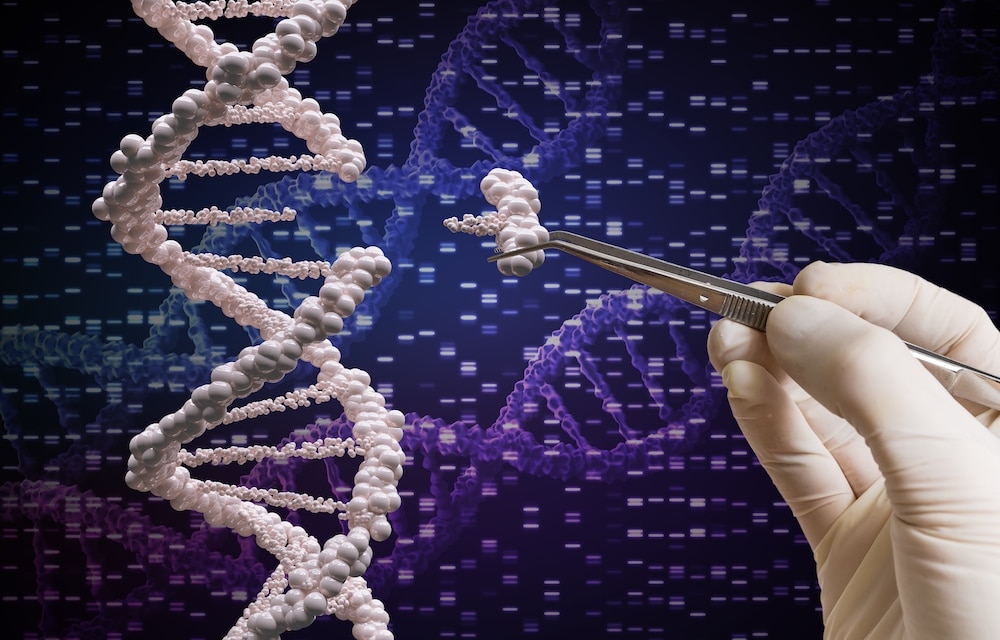Create a free profile to get unlimited access to exclusive videos, sweepstakes, and more!
Could we delete diseases passed down through our DNA?
CRISPR-Cas9 can now edit out hereditary diseases.

Maybe your genes gave you those eyes or that smile that everyone says you got from your mom (though your dad insists it was from him), but they can also pass on less desirable things.
What has now been proven possible was once the stuff of science fiction dreams. CRISPR has shown it can successfully edit out detrimental genetic conditions before they are inherited — which could mean the beginning of the end for hereditary diseases. It could also help obliterate invasive species from ecosystems under attack. Imagine if gene editing could delete conditions you never asked to be born with while getting rid of the cane toad invasion in Australia.
CRISPR-Cas9 has been able to successfully edit DNA again and again, but it’s never done anything like this. Kind of like DNA autocorrecting itself, the editing needs to make deletion in a cell happen during a certain phase of meiosis. Researcher Kimberly Cooper of UC San Diego, who coauthored a study recently published in PLOS Biology, figured out exactly when to get to that meiotic window and how to control which copies of genes are handed down to the next generation.
“We think that meiotic prophase I is really critical,” Cooper told SYFY WIRE. “That's the time at which homologous chromosomes are aligned and cells favor using a template strand of DNA to repair broken ends rather than sticking the ends back together, which can cause mutations.”
Meisosis is the process that splits cells into gametes that have half the chromosomes of the original cells. Human cells have 46 chromosomes, meaning human gametes have 23. The gametes of the mice used in the experiment come close with 20. During meiotic prophase I, chromosomes pair with others that have the same structures and gene patterns; these pairs are bivalents. How bivalents form leans heavily on chromosome fusion at the beginning of meiosis, along with the reshuffling of genes that often cross from one chromosome to another.
With CRISPR-Cas9, the breaks in both strands of DNA prevent that recombination of chromosomes, and it is this part of meiosis that is thought to hit “copy” and “paste” on genes, whether we want them or not. Cas9 also has to actually express itself. This was a challenge for Cooper and her team, who were having more promising results with female mice than males. They realized that the way meiosis regulates genes could control expression of Cas9. This resulted in gradual expression with fewer DNA breaks, but you need transgenic mice for that.
“Everything for this approach is encoded in the genome by two transgenes. The first is a transgene that expresses the Cas9 protein, and the second is a transgene that expresses the guide RNA that takes Cas9 to the target site,” she said. “Gene conversion is then as simple as putting mice with the right genotypes together.”
When transgenic mice produce more transgenic mice, those two transgenes come together in the offspring and cut the allele (an alt version of the gene) the offspring are receiving so that the modified transgene can be copy-pasted to their DNA. This isn’t going to be possible in humans anytime soon. For now, it could at least help us understand the mutations and complexities behind hereditary diseases, so gene therapies can be created for humans. Observing disease progression and testing gene therapy in the lab could someday make its way to us.
So what about those cane toads and other species that are taking over and threatening endemic species? Genetically modified organisms may be the answer. Of course, you can’t just let a swarm of transgenic toads loose and expect the problem to correct itself. This will have to be done gradually, and not before test after test proves that it will actually be effective.
“Our research is important because it shows what might be possible and what remains to be accomplished,” said Cooper. “What can be accomplished is important to conversations about what should be accomplished.”


























